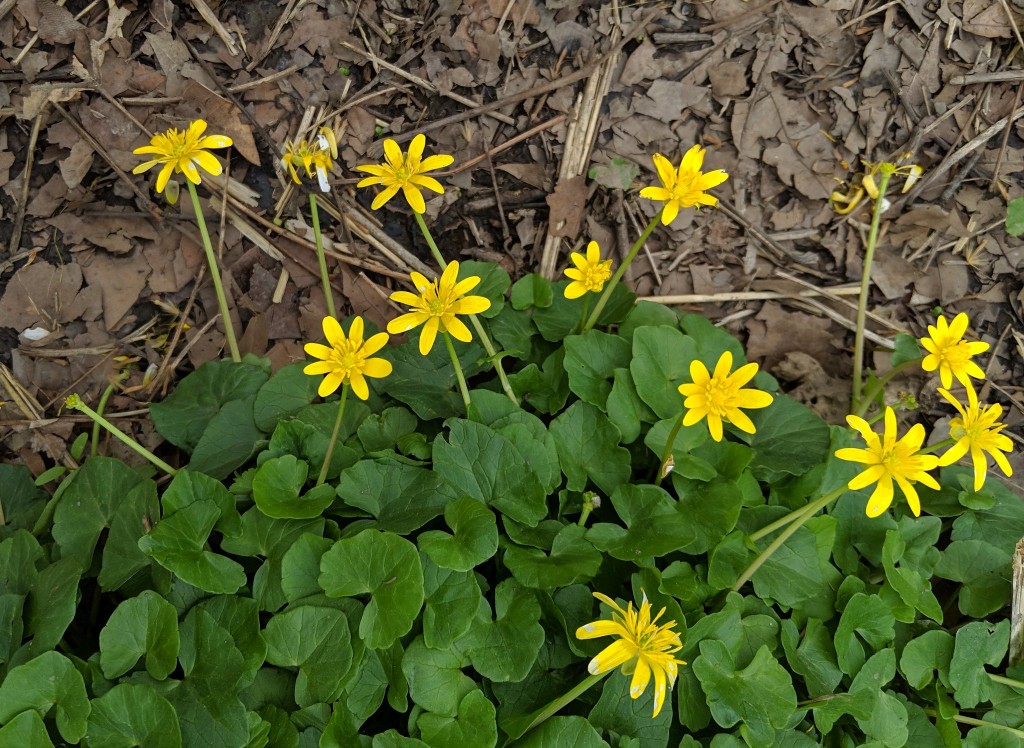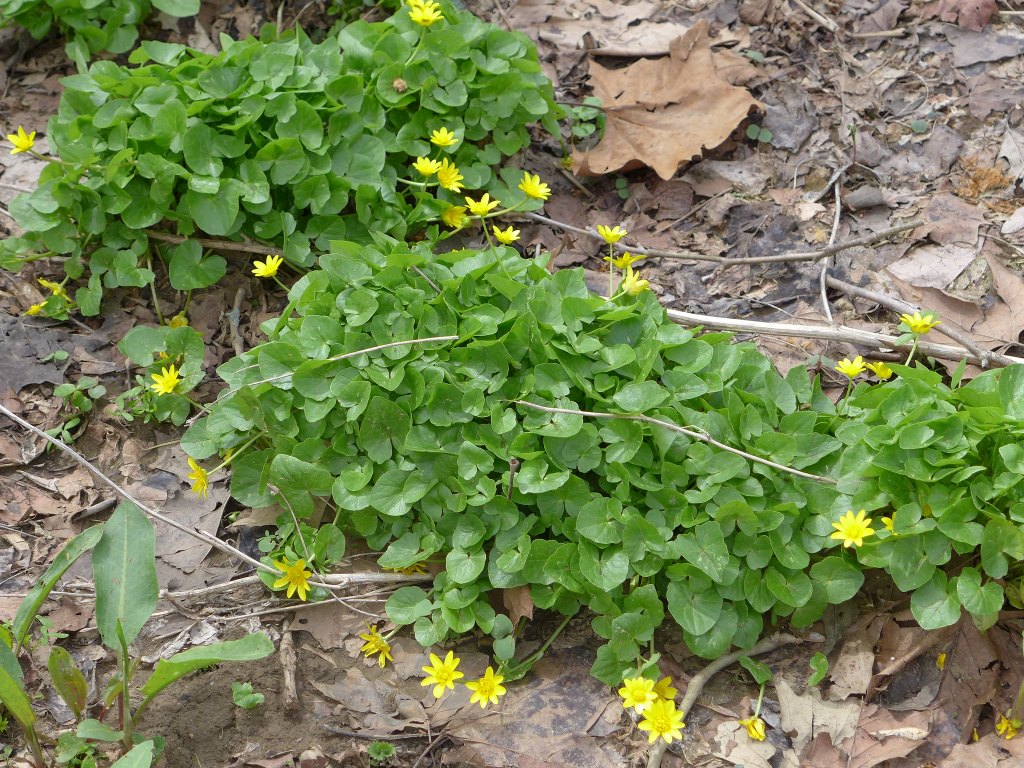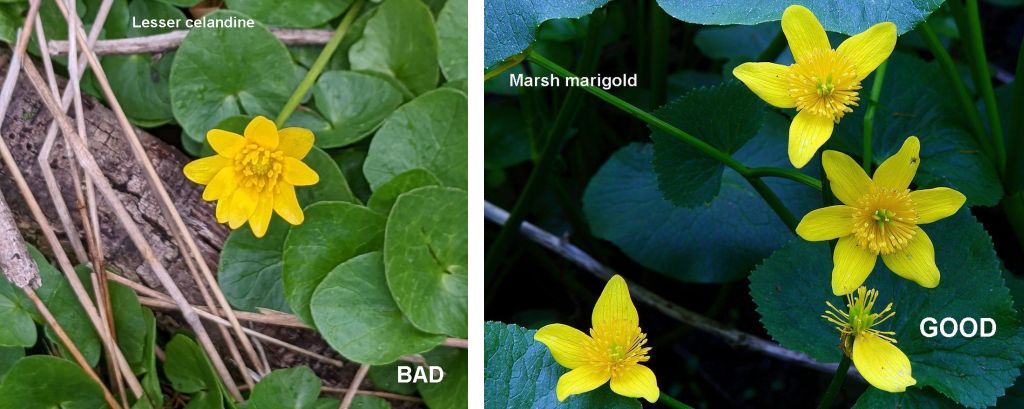
29 March 2023
This is the time of year when invasive plants sprout and bloom before the natives, particularly lesser celandine (Ficaria verna), a member of the Buttercup family with succulent leaves and bright yellow 8-12 petal flowers.
According to invasive.org, lesser celandine prefers sandy soil in low open woods, floodplains, meadows and waste places. It spreads easily through tubers and tiny bulblets so a scouring flood or digging in its vicinity, including digging animals, spreads it to new sites. It also thrives because it’s poisonous and deer don’t eat it.
I usually find lesser celandine blanketing floodplains including those at the Monongahela River at Duck Hollow — where it’s already in bloom — and Chartiers Creek at Boyce Mayview and Wingfield Pines.

Blanketing is what makes it invasive. Native spring ephemeral flowers need unobstructed sunlight to complete their life cycle but lesser celandine leafs out early, blankets the ground and shades the natives before they can make a start.
When I was learning to identify plants I used to confuse it with the native plant marsh marigold (Caltha palustris).

Penn State Extension explains the difference between them here but the biggest hint is this: If the plant is carpeting the ground and blooming in March or early April, especially on a floodplain, you can bet it’s lesser celandine.
p.s. Learn more about invasive plants in Pennsylvania at DCNR’s Invasive Plant Fact Sheets at https://www.dcnr.pa.gov/Conservation/WildPlants/InvasivePlants/InvasivePlantFactSheets/Pages/default.aspx
(photos by Kate St. John and from Wikimedia Commons)
Thanks once again, Kate, for information pertinent to the garden “outside my window.”